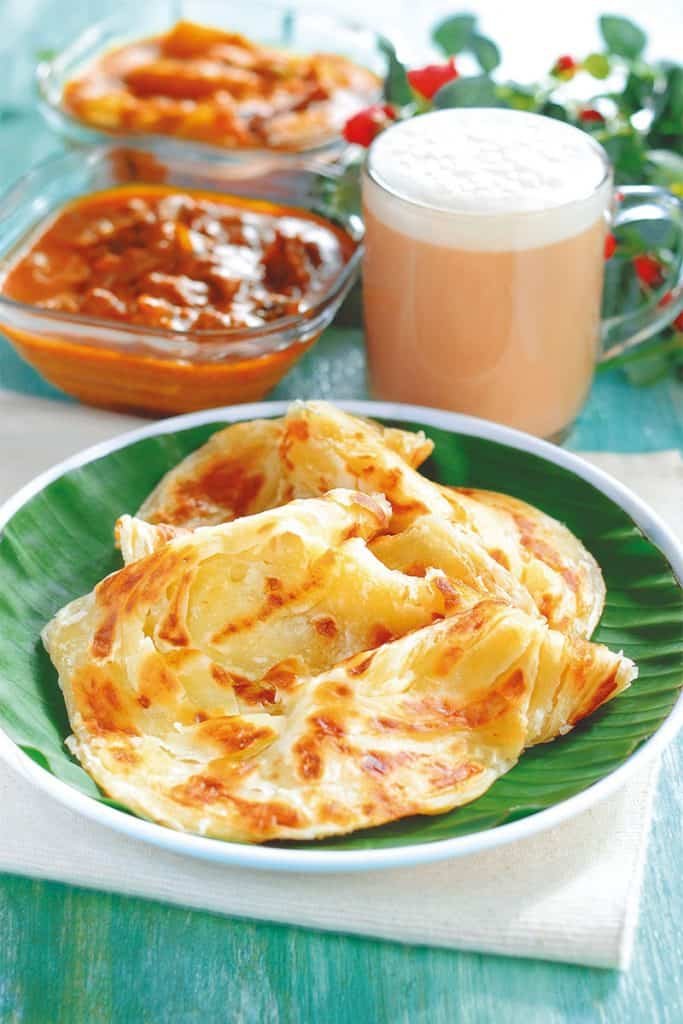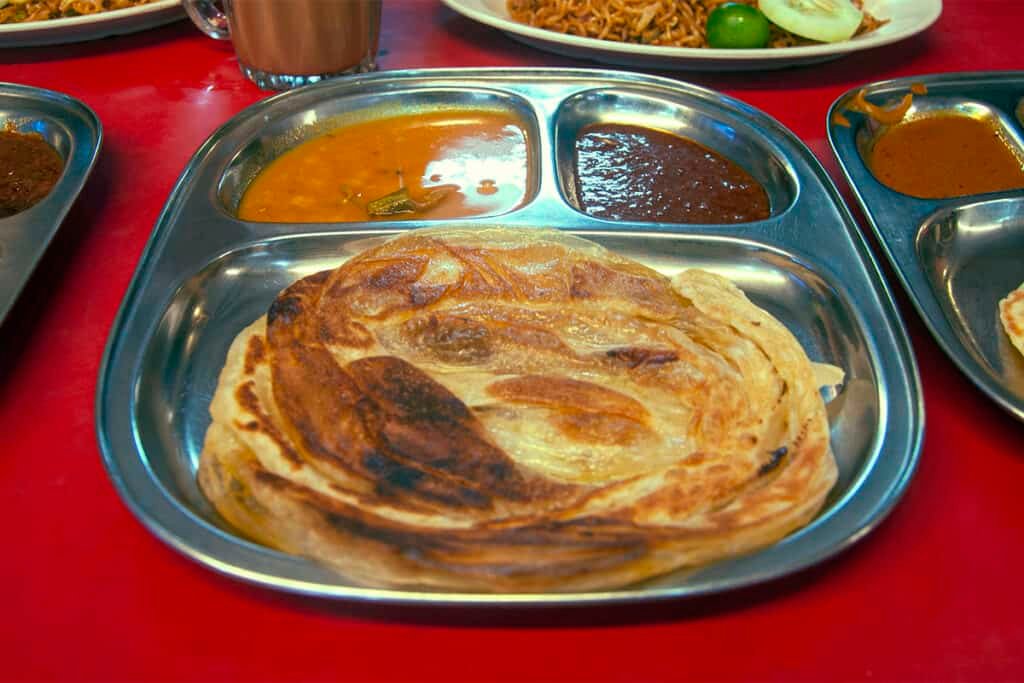Roti is the Malaysian term for ‘bread’ but typically refers to a certain type of layered flatbread widely popular across Malaysia. Originating from the Indian subcontinent, brought over specifically by Indian Muslims and is traditionally served in Mamak stalls which are commonly found all over Malaysia. The Roti flatbread can go by many names across Asia, but in its simplest form, it’s known as a ‘Roti Canai’ in Malaysia. Roti Canai is made with just a few ingredients, however, it’s the unusual layering preparation technique that produces its unique texture and flavour. Roti is now considered a staple at Malaysian meals and is great for dipping and mopping up saucy dishes like Rendang, Dhal or Sambal. It’s very likely that you’ve already come across the more internationally popular flatbreads such as chapati or naan. Meanwhile, the Malaysian roti has evolved over the years to spawn different variations on the classic roti which reflect Malaysia’s unique food culture. PA Food’s Roti range allows food lovers around the world to get a taste of this amazing flatbread!

What Makes Roti so Unique?
As mentioned already, a Roti Canai is made with just a few ingredients: wheat flour, salt, water and margarine (usually ghee). This bread is prepared thinly and cooked on a skillet, unlike naan bread which is rolled thicker, with a softer inside and cooked in a tandoor oven. After the dough is kneaded, flattened and oiled, it is then spread out paper-thin using a unique tossing and slapping technique, which greatly increases the surface area. This paper-thin layer of dough is then either simply folded or gathered into a long rope-like mass which is wound into a spiral and flattened. This unusual method ensures the final product contains a multitude of layers which helps to give it a satisfyingly flakey and crispy texture. Our roti pratha range is made using a similar method.
Popular Forms of Malaysian Roti
Roti is a very simple but enjoyable part of Malaysian cuisine. However far from being a simple flatbread, there are many different variations of roti which is why it is so timeless and loved. Roti really does have a place in every Malaysian meal, and if you’ve experienced Malaysian culture, you’ll know that rotis can be eaten for breakfast, a tea snack, as confectionery and as part of the main meal.

Roti Canai
Across the restaurants, mamaks, hawker stalls and kitchen tables of Malaysia, the roti canai is a national favourite and it’s easy to see why. The roti canai is a flakey, layered and buttery flatbread originating in southern India and brought to Malaysia by those immigrating south. The beauty of the roti canai is that the dough mixture is made with clarified butter ghee which gives the bread those microlayers and a wonderful buttery taste. The layered flakey texture is also down to the way the roti dough is thinned out to 2mm in thickness, then repeatedly folded over before being rolled and then flattened.
In a previous post, we talked about how Indian Muslim immigrants or “hawkers” used small mobile shacks to sell cheap filling meals to the public more or less 24-7. The mamak style of roti canai is known for being extra fluffy and layered due to the skilful flipping technique used by the mamak chefs. At PA Food, we wanted to share the authentic mamak roti canai through our mamak style roti canai range which is available frozen and can be cooked on a skillet or in the oven!
Roti Bawang (Onion)
The roti bawang is a form of roti that is stuffed with finely diced onions and then fried to create a tortilla-like texture. Usually, this type of roti is not made using clarified ghee and is thinner and denser than the flakey pancake texture of the roti canai. However, there are many variations of the Roti Bawang including a roti canai style bawang which is a mamak favourite. The roti Bawang has a tangy aroma with added crunch from the onions and is great for curries and saucy dishes.


Roti Bom
Roti is so versatile, it can be eaten as either savoury or sweet which is exactly where roti bom comes in. This sweet form of roti contains sugar and kaya. Kaya is a sweet, green colour paste which can best be described as a coconut jam. The sugar is added to enhance the sweetness. The Kaya is then smothered over the stretched out dough mix before being folded. The roti bom can either be eaten as a snack or dessert and most mamaks offer a variety of toppings including banana, peanut butter, chocolate sauce, carnation and sugar.

Roti Sardin
Roti sardin is a roti-based dish where the roti is stuffed with a mashed mixture of chillies, diced onions, lime juice, eggs, turmeric and canned sardines. This rich delicious mixture is quickly fried before being wrapped in the roti pastry. The roti sardin is a breakfast favourite alongside the widely loved Nasi Lemak. The use of groundfish creates an incredible umami taste and is typical of the ethnic Malay approach to cooking which includes a spicy hit. It can be also be served as a roll (or roti sardin gulung) where the mixture is rolled in a roti, sealed with an egg wash and then deep-fried. These are particularly delicious served with sambal and curry sauce.
Our Frozen Malaysian Roti
PA Food has been supplying Malaysia and the world with authentic Malaysian roti for over 30 years. Far from being just flatbread, the most authentic Malaysian roti combines high-quality ingredients with a cooking technique that ensures that flakey, layered texture. That’s why our roti range is one of our most popular products for local Malaysians as well, who appreciate the authentic taste and convenience our frozen roti provides. For more information on importing PA Food Malaysian flatbread products, contact our friendly customer team today!
Share :








